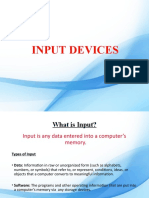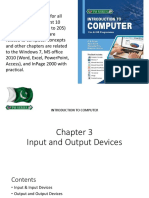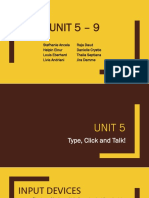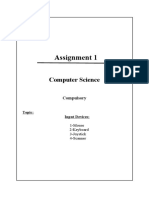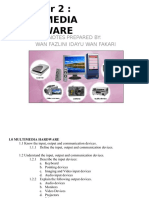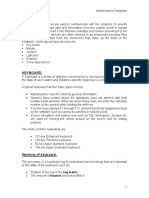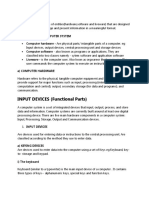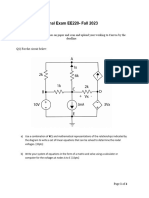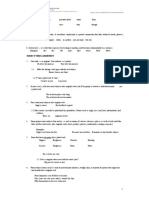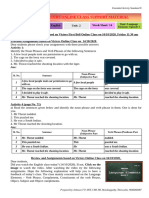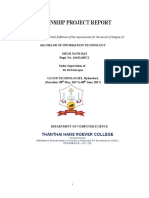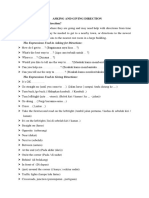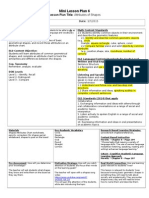0% found this document useful (0 votes)
27 views32 pagesChapter 2 Input and Output Devices
Input devices are essential components of a computer that allow users to send data and commands for processing. They convert user actions into signals that the computer can understand, enabling interaction through devices like keyboards, mice, and touchscreens. Various types of input devices exist, each serving different functions, including keyboards, mice, joysticks, and scanners.
Uploaded by
supriyasadaye.bssCopyright
© © All Rights Reserved
We take content rights seriously. If you suspect this is your content, claim it here.
Available Formats
Download as PDF, TXT or read online on Scribd
0% found this document useful (0 votes)
27 views32 pagesChapter 2 Input and Output Devices
Input devices are essential components of a computer that allow users to send data and commands for processing. They convert user actions into signals that the computer can understand, enabling interaction through devices like keyboards, mice, and touchscreens. Various types of input devices exist, each serving different functions, including keyboards, mice, joysticks, and scanners.
Uploaded by
supriyasadaye.bssCopyright
© © All Rights Reserved
We take content rights seriously. If you suspect this is your content, claim it here.
Available Formats
Download as PDF, TXT or read online on Scribd
/ 32









